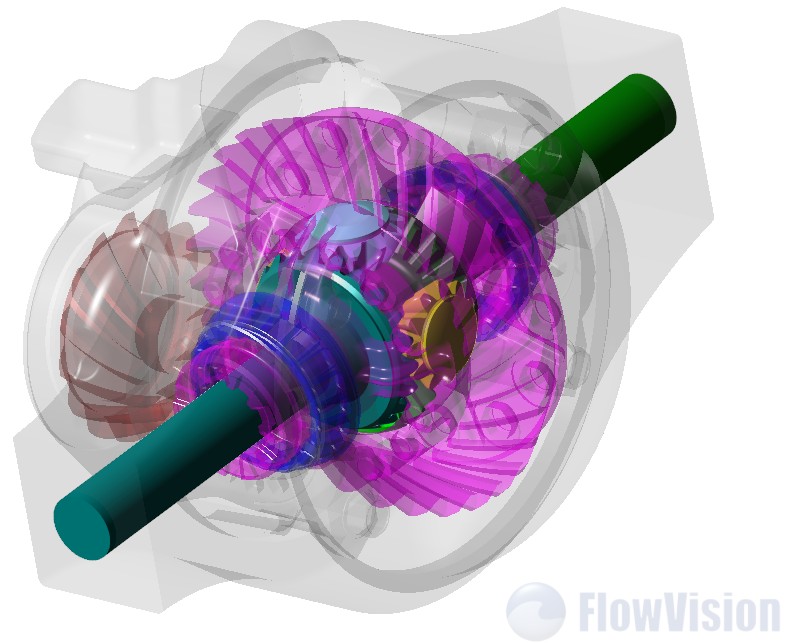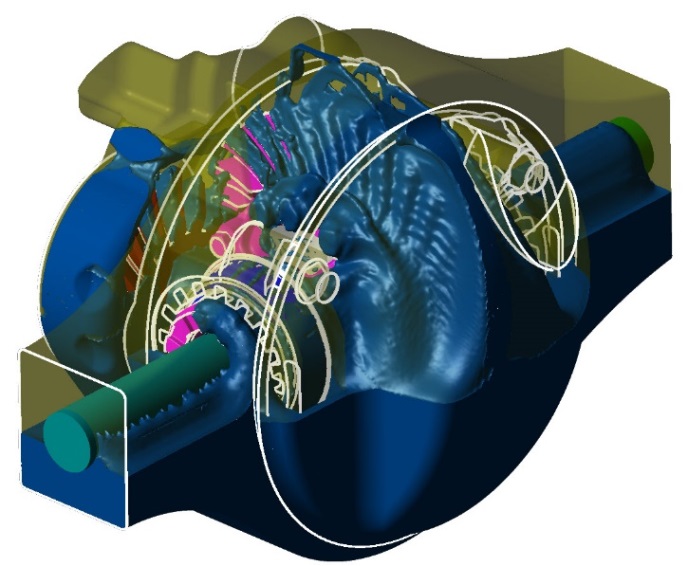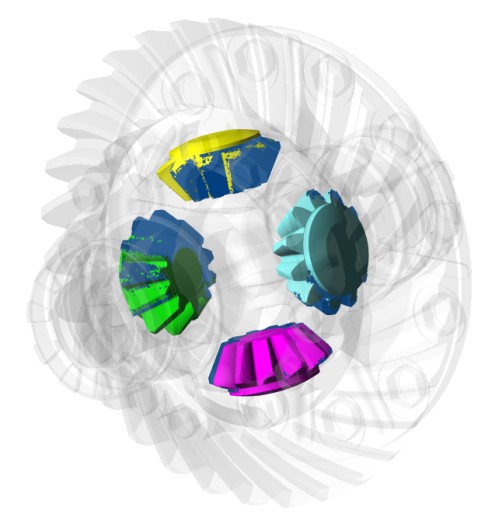The CFD software package FlowVision was used for the most complicated calculations of oil distribution in the crankcase of the leading axle of the KAMAZ truck. This pilot project was successfully completed in close cooperation between the specialists of TESIS and KAMAZ.

Geometrical model of a fragment of a crankcase of the driving axle
Based on the three-dimensional CAD-model of the crankcase created by the designers of KAMAZ company, the specialists of TESIS have developed a mathematical model which describe the flow of oil partially filling the crankcase volume under the action of rotating structural parts and gravity field. The calculations have been performed together for various modes of operation of the simulated unit differing in the operating temperature of the transmission oil and the angular velocities of the rotating parts, the driving and central wheels, and also the satellites.

The oil distribution in the crankcase volume
The analysis of modeling results carried out by specialists of KAMAZ and TESIS made it possible to trace the dynamics of movement and distribution of oil in the crankcase volume, as well as to evaluate the effectiveness of lubricating the surfaces of structural parts.

Distribution of oil on the surfaces of satellites
Based on expert analysis of the results of calculations, conclusions were drawn about the adequacy of the calculated design model and the possibility of using the FlowVision software package to solve the issues and design basis for the lubrication of complex mechanical systems for KAMAZ vehicles. The developed approach gives the designer the opportunity at all stages of design to obtain and analyze reliable and comprehensive information on the characteristics of the lubrication system.
Successful solution of the task was made possible thanks to the creative approach and well-coordinated work of the pilot project team - specialists of KAMAZ and TESIS, as well as a number of innovative technologies and unique functionality of the software package FlowVision, which include:
- Direct import of the geometry of modeled object from the CAD-system using a wide list of supported formats;
- Automatic generation of a computational grid with local dynamic adaptation, which makes it possible to obtain an exact solution with minimal costs for preparing the task for calculation and for the required computing resources;
- Simulation of the complex motion of a system of solids in liquid according to a given law or under the action of hydrodynamic forces;
- Simulation of flows in the gaps without the construction of a detailed mesh inside the gap - calculation of the flow of oil in the channels formed by the gears of the rotating wheels, satellites and bearings;
- Extensive opportunities for the presentation and analysis of modeling results:
- A realistic representation of the distribution of oil in the volume of the constructions;
- Visualization of surfaces for lubricated parts;
- Non-stationary circulation of oil in the lubrication system;
- Distribution of pressure on the walls of the constructions;
- Field of velocities in the calculated domain.
Based on the results of the pilot project, KAMAZ company and TESIS company agreed on further long-term cooperation with the aim of evolution a computational model and creating new modern methods for modeling physical processes based on FlowVision and ABAQUS software packages for use in the design of various KAMAZ vehicles.